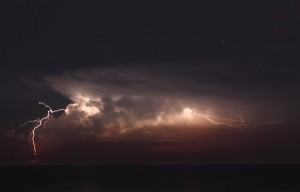
People who suffer from a thunderstorm phobia (also known as ‘Astraphobia’) do not usually seek treatment for this condition until it has reached panic proportions. When these patients first become aware of the symptoms they initially try to combat the feelings of panic by taking practical precautions, such as drawing the curtains and un-plugging electrical appliances. This would be considered to be quite a normal reaction. However, as the phobia escalates even the possibility of an approaching storm will precipitate feelings of anxiety. This can reach such proportions that they constantly watch the weather forecast and scan the sky in case the weather might change for the worse.
The first line of treatment is to use hypnosis to desensitise the person to mild weather conditions, such as “cotton wool” clouds in the sky. As the treatment progresses more severe weather is introduced in the hypnosis. The severity is carefully graded as the patient feels better equipped to cope with each level of difficulty, until eventually a stage is reached when they are able to cope with the possibility of an imminent thunderstorm.
The therapy continues until the patient feels no panic when they hear thunder claps and lightening flashing. Throughout the hypnotherapy the therapist gives the patient a vivid description of the various scenarios interspersed with the patients chosen “special place” where they feel safe and secure.
In the final stages of the treatment, the patient is asked to imagine all the component parts of a thunderstorm together, which has the effect of consolidating the treatment. During the course of the therapy it is possible that the person may wish to talk about the reasons behind the development of their phobia.
In David Kraft’s experience thunderstorm phobia can be treated very successfully using a combination of hypnotherapy and psychotherapy.


